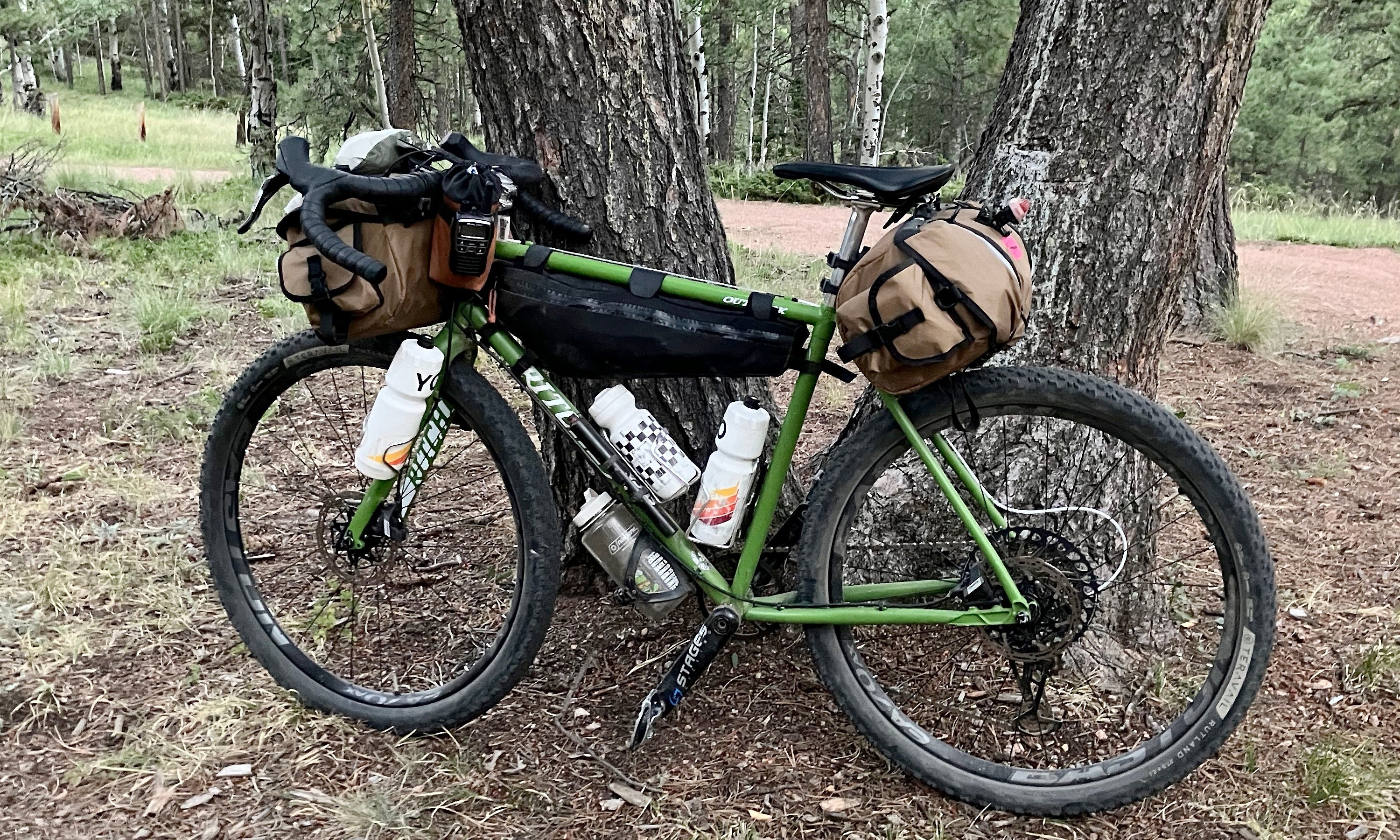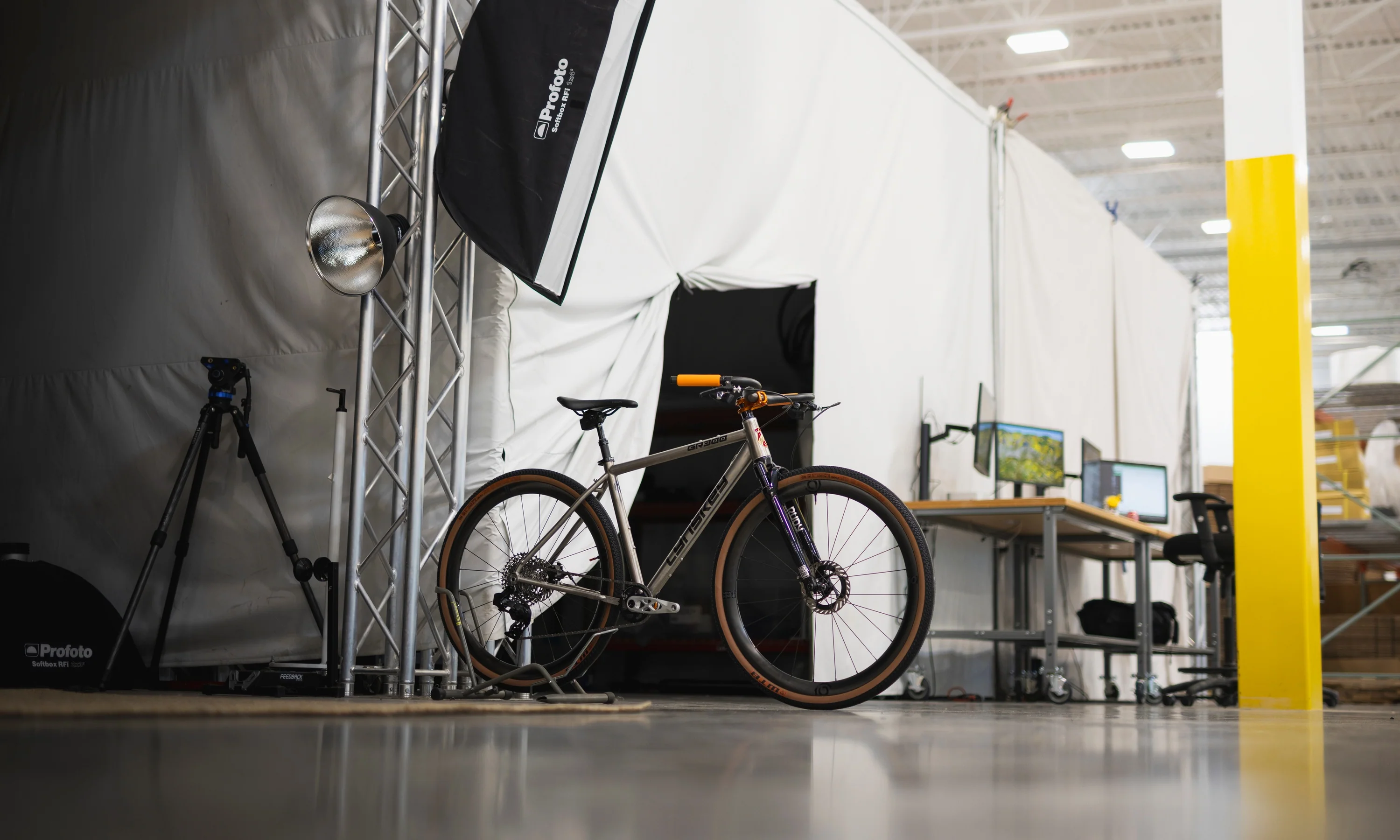How's this for a perk of the job? Our professional Bike Techs thoroughly test-ride every Certified Pre-Owned bike before it gets boxed up, to ensure it arrives in perfect working order. TPC even has its own indoor test track so we can inspect and certify bikes year-round.
I got the rundown on how to test ride a used bike from Billy Finlay, one of our Master Technicians.
Pre-ride inspection checklist
 Before you get too excited, give everything a quick visual inspection.
Before you get too excited, give everything a quick visual inspection.
If you're scoping out a used bike, here are a few things to check off the list before your test ride. A quick inspection will ensure that a bike is safe to ride and worth buying.
Frame
When examining a bike, go over the entire frame with a flashlight (the one on your phone is fine). Be wary of any cracks, sharp dents, or deep gouges. On metal frames, inspect the welds for small cracks.
Chain
Check the chain to ensure that no links are damaged or coming apart. If there's a quick link, make sure it’s installed properly.
Cassette and chainrings
Check for broken teeth on the cassette and chainring(s). If the cassette or chainring teeth have a “V-shaped” or “shark tooth-like” appearance then they are worn and will require replacement.
Tires
Tires should hold air, be fully seated on the rim, and shouldn’t be too worn, cracked, or dry-rotted.
Brakes
Do a parking lot brake test. For disc brakes, make sure the lever feels firm when you pull it. If its mushy feeling or there’s too much lever throw, you might need to replace the brake pads or perform a bleed later.
For rim brakes, make sure the brake pads aren’t worn past the wear line on the pad and that they contact the brake track correctly. They shouldn’t touch the tire or any other part of the rim. Also, check for brake track wear.
“I run my finger over the brake track to make sure it’s not concave,” Finlay explained. “If a rim brake track feels concave instead of flat, it’s worn out.”
Bolt check
Make sure the stem, seat post, and saddle bolts are all tight so they don’t slip while riding.
“Push down firmly on the hoods and you'll know right away if the bars aren’t tight enough,” Finlay said. “For mountain bike bars, I kind of give it a firm roll, as if you're trying to pull up over something while riding, to see if they’ll rotate.”
Check that the axles are tightened too, especially if it's a quick-release bike.
“With quick-release skewers, make sure the wheels are installed straight and the quick-release cam lever releases and tightens properly.”
How to test-ride a used bike
 Don't just soft-pedal. Do some hard sprints to make sure everything works under load.
Don't just soft-pedal. Do some hard sprints to make sure everything works under load.
When test-riding a bike, our Techs are paying attention to four key areas: shifting, braking, performance under load, and creaks. If a bike struggles or fails in any of these areas, it’s immediately sent back to a workstation to be serviced. Nearly all of these issues can be fixed, but it takes a ride to catch them.
Shifting
While riding, shift through every gear combination. Do this while soft-pedaling, but also try shifting a few times under load.
“That will let you know if the chain and cassette are meshing together well,” Finlay explained. “If it hesitates to change gears up or down, I'll typically hop off and try and do some quick barrel adjuster adjustments to see if it’s just an indexing issue. Anything more complicated and it will have to go back to one of the Bike Techs to get fixed.”
If you’re test-riding a full-suspension mountain bike, keep in mind that these bikes may shift differently depending on rider weight.
“With a lot of modern full-suspension bikes, the b-gap tends to change as you compress the suspension,” Finlay explained. “So we want to take into consideration the weight of the rider. If something is off, we'll check the b-gap while sitting on the bike and adjust the b-gap or use a shock pump to adjust the sag as necessary. Usually, that will improve the shifting immediately.”
If a bike doesn’t shift smoothly, and simple adjustments like indexing or b-gap don’t fix it, the bike might have a bent derailleur hanger or need replacement cables and housing.
Braking
Many riders don’t pay enough attention to the brakes during test rides. Stopping is one of the most important functions, so after running through all the gears, give each brake a good workout.
“Build up some speed to really test the stopping power,” Finlay said. “Don’t grab a handful of brake; you don’t want to skid or go over the bars, but apply a good amount of pressure to make sure they’re working properly. Test each brake individually to make sure both the front and rear actuate properly.”
Performance under load
Bikes can behave differently when they’re under heavy loads. To make sure things don’t come apart when we’re on the rivet, we want to pedal the bike hard. The best way to do this is by riding up a steep hill. At TPC we use a long and steep ramp by our building. If there isn’t a steep hill nearby, you can get the same effect by using the brakes or sprinting out of the saddle.
“You can put some load on the drivetrain by applying a little bit of pressure to the front brake while pedaling,” Finlay explained. “That'll simulate a load like you're climbing. Also, you can stand up and do a quick sprint. When we do this we’re making sure that everything feels smooth, there are no creaks, and nothing's going to slip.”
Creaks
Usually, creaks can only be uncovered by test-riding a bike. “A creak is always a no-go for us,” Finlay explained. “If we hear one, it immediately goes back to get sorted out.”
If you hear a creak while test-riding a used bike, however, it doesn’t mean you need to walk away. Our Bike Techs test ride hundreds of bikes a week and find that most creaks come from three main sources: the bottom bracket, the rear axle, or the cassette. Occasionally, it’s the seatpost or the headset, but the first three are the most common.
“Sometimes the rear axle just needs grease,” Finlay said. “In the worst cases, we replace the entire bottom bracket and that takes care of it.”
Fortunately, if you choose a Certified Pre-Owned bike, creaks are among the many things you don’t have to worry about. Trust us, because we already took it for a test ride!

























